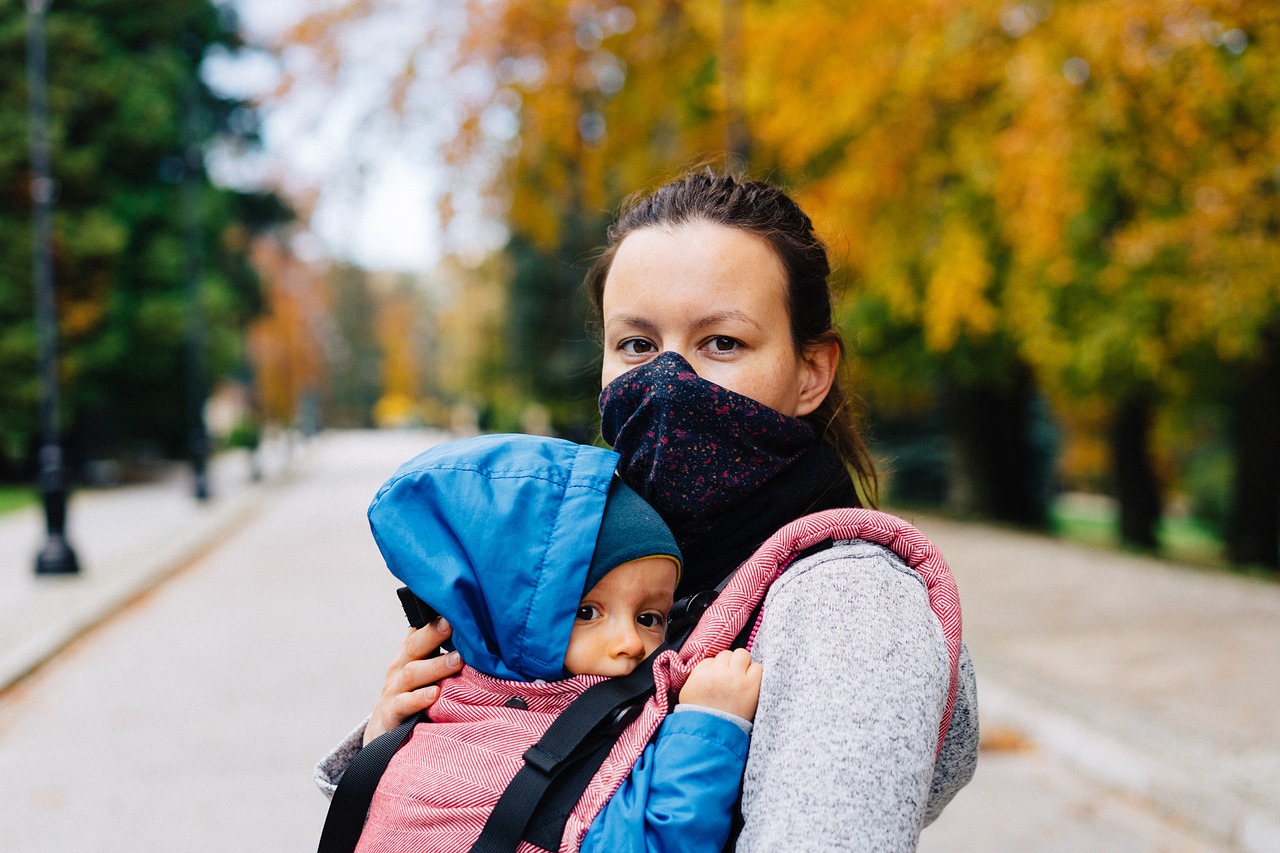The Relevance of Personal Safety in the Metaverse
The metaverse is not just a buzzword; it’s a rapidly evolving digital universe that merges our physical and virtual lives. Imagine stepping into a world where your wildest dreams can come true, where you can explore, create, and interact with others in ways that were once confined to the realm of science fiction. But with great power comes great responsibility, and as we dive deeper into this immersive landscape, the importance of personal safety becomes more critical than ever.
As we navigate through these digital realms, we must recognize that the metaverse is not devoid of risks. Just like walking in a bustling city, where you need to be aware of your surroundings, the same applies to virtual environments. Users can encounter various dangers, including cyberbullying, harassment, and privacy breaches. The anonymity that the metaverse provides can sometimes embolden negative behaviors, making it essential for users to understand how to protect themselves.
Moreover, the concept of digital identity takes on a new meaning in the metaverse. Your avatar, digital assets, and personal information are extensions of yourself in this virtual world. Therefore, safeguarding your digital identity is paramount. Identity theft can occur just as easily online as it can offline, and the consequences can be devastating. Users need to be proactive in implementing security measures to shield their identities from malicious actors.
In response to these challenges, effective interaction strategies are vital. Setting personal boundaries, utilizing privacy settings, and recognizing red flags in user behavior can significantly enhance your safety. Just as you wouldn’t share your home address with a stranger, it’s crucial to be mindful of what personal information you disclose online. The metaverse should be a space for creativity and connection, but it must also be a safe haven for all users.
Platform providers play a pivotal role in ensuring a safe metaverse experience. They have a responsibility to implement safety features, monitor interactions, and create robust community guidelines. After all, a safe environment fosters creativity and encourages more users to engage positively. As users, we must also hold these platforms accountable for maintaining a secure digital atmosphere.
As we look to the future, the legal implications surrounding personal safety in the metaverse are becoming increasingly significant. Who is liable in cases of harassment or data breaches? How do we enforce digital rights in a space that operates outside traditional legal frameworks? These questions need addressing as we continue to explore this new frontier.
Community support systems and reporting mechanisms are also essential. Users should feel empowered to report unsafe behavior and seek help when needed. Just as in real life, having a support network can make all the difference in navigating challenges. Whether it’s a friend, a community group, or platform moderators, knowing that help is available can alleviate some of the fears associated with virtual interactions.
Education is key. Users must be aware of the risks and proactive in enhancing their personal security. This means understanding the tools available to protect oneself and being informed about potential threats. The metaverse is a vast and exciting space, but it requires informed users to thrive safely.
In conclusion, the metaverse holds incredible potential for human connection and creativity, but it also presents unique challenges regarding personal safety. As we continue to explore this digital frontier, we must prioritize safety measures, educate ourselves and others, and advocate for responsible platform practices. Only then can we fully embrace the metaverse as a safe and enriching environment for all.
- What is the metaverse? The metaverse is a collective virtual space created by the convergence of virtually enhanced physical reality and physically persistent virtual reality.
- What are the main risks associated with the metaverse? Risks include cyberbullying, harassment, data privacy issues, and the psychological effects of immersive environments.
- How can I protect my digital identity in the metaverse? Use strong passwords, enable two-factor authentication, and be cautious about sharing personal information.
- What should I do if I encounter unsafe behavior? Report the behavior to the platform and seek support from friends or community groups.
- Are platform providers responsible for user safety? Yes, they have a responsibility to implement safety features and monitor interactions to create a safe environment.

Understanding the Metaverse
The metaverse is a term that has been buzzing around tech circles and beyond, and for good reason! Imagine a world where the lines between the physical and digital realms blur so seamlessly that you can interact with others in real-time, no matter where they are in the world. This is the essence of the metaverse—a collective virtual space that encompasses augmented reality (AR), virtual reality (VR), and the internet as we know it. In this immersive environment, users can create, explore, and engage in a multitude of experiences that feel incredibly real.
At its core, the metaverse is not just a single platform; it's a fusion of various technologies and platforms that create an interconnected universe. Think of it as a vast digital playground where you can socialize, work, play games, attend events, and even shop—all from the comfort of your home. The components of the metaverse include:
- Virtual Reality (VR): This is where users wear headsets to enter a fully immersive digital environment, offering experiences that can range from thrilling roller coasters to serene landscapes.
- Augmented Reality (AR): Unlike VR, AR overlays digital information onto the real world. Imagine pointing your phone at a building and seeing historical facts pop up on your screen!
- Social Platforms: These are the hubs where users interact, share experiences, and build communities. Examples include platforms like Roblox and Second Life.
- Blockchain Technology: This underpins many metaverse applications by providing a decentralized framework for ownership and transactions, especially in the realm of digital assets like NFTs.
As we dive deeper into the metaverse, it's crucial to understand how these elements come together to create an engaging user experience. Imagine walking into a virtual concert where you can not only hear the music but feel the vibrations through your VR headset, all while chatting with friends from around the globe. This level of interactivity is reshaping how we think about social interactions and entertainment.
However, with these exciting advancements come significant implications for personal safety. The more we engage in these virtual spaces, the more we need to consider what it means to protect ourselves and our digital identities. As we navigate this new frontier, understanding the metaverse is not just about the fun and games; it's also about recognizing the potential risks and responsibilities that come with it.
In summary, the metaverse represents a revolutionary shift in how we connect, create, and communicate. It offers endless opportunities for exploration and innovation, but it also challenges us to think critically about our safety and privacy in these expansive digital landscapes. As we continue to embrace this new reality, staying informed and vigilant will be key to ensuring a positive and secure experience in the metaverse.

Identifying Risks in the Metaverse
The metaverse, while an exciting frontier of digital interaction, is not without its dangers. Imagine stepping into a vibrant, immersive world where you can connect with friends and explore limitless possibilities. Sounds amazing, right? But just like in the real world, this digital landscape is riddled with potential risks that users must navigate carefully. From cyberbullying to data privacy issues, the threats are real and can have serious implications for individuals.
One of the most pressing concerns is cyberbullying. In a space where anonymity can thrive, some users may feel emboldened to engage in harmful behavior. This can manifest in various forms, such as harassment, trolling, or spreading false information. The emotional toll of such experiences can be profound, leading to feelings of isolation and anxiety. Just think about it: in a world designed for connection, the very act of connecting can sometimes feel like a minefield.
Another significant risk is related to data privacy. As users engage with various platforms within the metaverse, they often share personal information that can be exploited. Data breaches, identity theft, and the unauthorized use of personal data are all too common in our increasingly digital lives. Users might not realize that every interaction, every shared moment, could potentially be a target for malicious actors. It's essential to approach the metaverse with caution, much like you would when sharing personal information in the physical world.
Moreover, the psychological effects of immersive environments cannot be overlooked. The metaverse can create experiences so engaging that users may lose track of time or even reality. This can lead to addictive behaviors, where individuals prioritize virtual interactions over real-life relationships and responsibilities. The blurring of lines between the physical and digital realms can lead to confusion and disorientation, making it vital for users to maintain a healthy balance.
In summary, while the metaverse offers incredible opportunities for connection and creativity, it is crucial to remain vigilant about the risks involved. Here’s a quick overview of the primary dangers:
- Cyberbullying: Harassment and negative interactions can occur in virtual spaces.
- Data Privacy Issues: Personal information can be at risk of theft and misuse.
- Psychological Effects: Immersion in virtual worlds can lead to addictive behaviors and disconnection from reality.
As users, being aware of these risks is the first step towards creating a safer metaverse experience. By understanding the potential dangers, individuals can take proactive measures to protect themselves and enjoy the benefits of this innovative digital realm.

Importance of Digital Identity Protection
In the vast and often unpredictable landscape of the metaverse, digital identity protection has become not just a choice, but a necessity. Imagine walking into a bustling virtual marketplace, where every avatar is a representation of someone, somewhere in the real world. Your digital identity is not just a username; it's a reflection of who you are, your interests, and your connections. However, with this immersive experience comes the risk of identity theft and misuse, making it crucial to safeguard your online persona.
Identity theft in the metaverse can manifest in various ways. For instance, an attacker might impersonate you, using your avatar to engage in malicious activities or to scam your friends. This can lead to a cascade of issues, from damaged reputations to financial loss. To illustrate, consider the following statistics on digital identity theft:
| Type of Identity Theft | Percentage of Cases |
|---|---|
| Social Media Accounts | 30% |
| Financial Accounts | 25% |
| Gaming Accounts | 20% |
| Other Online Identities | 25% |
These numbers highlight the variety of platforms where your identity can be compromised. So, how can you protect yourself? First and foremost, it's essential to use strong and unique passwords for each of your accounts. Think of your password as the lock on your front door; the stronger it is, the harder it is for someone to break in. Additionally, enabling two-factor authentication adds an extra layer of security, ensuring that even if someone gets hold of your password, they still can't access your account without a second form of verification.
Moreover, being mindful of what you share in the metaverse is crucial. While it might be tempting to showcase every detail of your digital life, remember that oversharing can lead to unintended consequences. For example, sharing your location or personal information can make you an easy target for cybercriminals. Instead, consider keeping certain details private and only share them with trusted friends.
Lastly, regularly monitoring your digital presence can help you catch any discrepancies early on. Just like you would keep an eye on your bank statements, checking your online profiles can alert you to any unauthorized changes or suspicious activity. If you notice something amiss, act quickly—report it to the platform and take steps to secure your accounts.
In conclusion, the importance of digital identity protection in the metaverse cannot be overstated. As we continue to explore these virtual realms, taking proactive steps to safeguard our identities will not only enhance our personal safety but also contribute to a more secure and enjoyable online community. Remember, in the digital world, your identity is your most valuable asset; treat it with the care it deserves.
- What is digital identity protection? Digital identity protection refers to the measures taken to secure one’s online persona from theft, misuse, or unauthorized access.
- How can I protect my digital identity in the metaverse? Use strong passwords, enable two-factor authentication, be cautious about what you share, and monitor your online profiles regularly.
- What should I do if I suspect my identity has been stolen? Immediately report the incident to the platform, change your passwords, and consider reaching out to your contacts to inform them of the situation.

Safe Interaction Strategies
When diving into the metaverse, the excitement can be overwhelming. It’s like stepping into a new world where the possibilities are endless, but just like any new environment, it’s crucial to navigate it safely. Imagine walking into a bustling marketplace; you wouldn’t just throw caution to the wind, right? Similarly, while interacting in virtual spaces, adopting is essential to ensure a positive experience.
One of the first steps in maintaining safety is to set clear boundaries. Just as you would in the physical world, it’s vital to communicate your comfort levels to others. Are there topics you’d rather avoid? Or perhaps certain types of interactions that make you uneasy? Establishing these boundaries early on can help prevent uncomfortable situations. Remember, it’s perfectly okay to say no or to disengage from conversations that feel inappropriate.
Next, utilizing privacy settings effectively can be a game changer. Most platforms in the metaverse offer a variety of privacy controls. For instance, you can manage who can see your profile, send you messages, or even join your virtual spaces. Taking the time to adjust these settings can significantly reduce unwanted interactions. It’s akin to locking your front door; while it doesn’t eliminate all risks, it certainly adds a layer of protection.
Moreover, being aware of red flags in user behavior is crucial. If someone is overly aggressive, asks invasive questions, or tries to pressure you into sharing personal information, these are signs to pay attention to. Trust your instincts; if something feels off, it probably is. Just like in real life, if you encounter someone who makes you uncomfortable, it’s okay to distance yourself, block them, or report their behavior to the platform.
Additionally, engaging with a community can enhance your safety. Surrounding yourself with like-minded individuals who prioritize safety creates a support system that can be invaluable. These connections can provide advice, share experiences, and even help you navigate tricky situations. Think of it as having a group of friends watching your back in a crowded concert; it makes the experience much more enjoyable and secure.
Lastly, don’t underestimate the power of education. Familiarize yourself with the safety features and resources available on the platform you’re using. Many metaverse environments offer tutorials or guides on how to stay safe. Taking the time to educate yourself is like arming yourself with knowledge before embarking on an adventure; it prepares you for the unexpected and helps you make informed decisions.
In summary, navigating the metaverse safely requires a mix of personal boundaries, effective use of privacy settings, awareness of user behavior, community engagement, and ongoing education. By adopting these strategies, you can enjoy all the thrilling aspects of virtual interactions while minimizing risks. Remember, your safety is in your hands, and with the right approach, you can explore the metaverse confidently.
- What should I do if I encounter harassment in the metaverse?
If you experience harassment, immediately use the reporting tools provided by the platform. Don’t hesitate to block the user and seek support from community members or moderators.
- How can I protect my personal information?
Always be cautious about sharing personal details. Use privacy settings to control who can access your information, and avoid sharing sensitive data in public areas.
- Are there any resources for learning more about metaverse safety?
Yes! Many platforms offer safety guides and tutorials. Additionally, online forums and communities often discuss best practices for staying safe in virtual environments.

Role of Platform Providers
The in the metaverse is crucial for ensuring a safe and enjoyable experience for users. As the architects of these virtual environments, they hold significant responsibility for implementing measures that protect users from various risks. Think of them as the gatekeepers of the digital realm, tasked with creating a space where individuals can interact freely while minimizing potential harm. Without proper oversight, the immersive experiences that the metaverse offers could quickly turn sour, leading to instances of harassment or abuse that tarnish the virtual landscape.
Platform providers must prioritize user safety by integrating robust safety features into their systems. This includes real-time moderation tools that can detect and address inappropriate behavior as it occurs. For instance, utilizing artificial intelligence to monitor conversations can help identify harmful language or actions before they escalate. Additionally, these providers should establish clear community guidelines that outline acceptable behavior, ensuring users understand the standards they are expected to uphold.
Moreover, platform providers should facilitate user education regarding safety practices. This can be achieved through informative pop-ups or tutorials that guide users on how to navigate potential risks. By empowering users with knowledge, they can better protect themselves and contribute to a safer environment. Consider it akin to teaching someone to swim; without the right skills and awareness, they could easily find themselves in over their heads.
Another vital aspect is the implementation of reporting mechanisms. Users should have easy access to tools that allow them to report unsafe behavior or harassment. When users feel supported and know that their concerns will be taken seriously, they are more likely to engage positively in the metaverse. This creates a culture of accountability where bad actors are less likely to thrive.
In addition to these measures, platform providers must also be transparent about their policies and practices. Regularly updating users on safety initiatives and changes to community guidelines fosters trust and encourages a collaborative approach to safety. Users should feel they are part of a community that values their well-being, and transparency is key to achieving that.
Ultimately, the responsibility of ensuring safety in the metaverse lies not just with the users but significantly with the platform providers. They must continuously evolve their strategies and tools to address emerging risks, adapting to the ever-changing landscape of virtual interactions. By doing so, they can create a metaverse that is not only immersive and engaging but also safe and inclusive for everyone.
- What are the main responsibilities of platform providers in the metaverse?
Platform providers are responsible for implementing safety features, moderating interactions, establishing community guidelines, and educating users about safety practices.
- How can users report unsafe behavior?
Most platforms provide reporting tools that allow users to easily flag inappropriate behavior or harassment, which are then reviewed by moderation teams.
- Why is user education important in the metaverse?
User education equips individuals with the knowledge to navigate potential risks, enhancing their personal security and contributing to a safer community.
- What role does transparency play in user safety?
Transparency builds trust between users and platform providers, ensuring that users feel secure and informed about safety measures and community standards.

Legal Implications of Safety in the Metaverse
The metaverse is not just a new frontier for social interaction and entertainment; it also brings with it a myriad of legal implications that are beginning to emerge as users navigate this complex digital landscape. As we dive deeper into virtual worlds, understanding the legal framework surrounding personal safety becomes crucial. The legalities involved in the metaverse encompass various aspects, including harassment, data breaches, and digital rights enforcement, which are becoming increasingly relevant as more people engage in these immersive experiences.
One of the primary concerns in the metaverse is the issue of harassment. Just as in the physical world, individuals can face unwanted attention or aggressive behavior from others. However, the anonymity and distance provided by virtual environments can sometimes exacerbate these situations. Legal systems are still catching up with the realities of virtual harassment. In many jurisdictions, laws that apply to physical harassment may not necessarily extend to the digital realm, creating a legal grey area. This raises questions about accountability: Who is responsible when someone is harassed in the metaverse?
Additionally, data privacy is a significant concern in the metaverse. Users often share personal information, which can be vulnerable to breaches. In a world where data is currency, the implications of a data breach can be devastating. For instance, if a user's personal data is compromised, it could lead to identity theft or financial loss. Current data protection laws, such as the General Data Protection Regulation (GDPR) in Europe, are beginning to address these issues, but enforcement in the metaverse is still a challenge. Companies operating within these virtual spaces must implement robust security measures to protect user data and comply with existing regulations.
Moreover, the concept of digital rights is gaining traction as users seek to maintain control over their virtual identities and assets. In traditional settings, users have clear rights regarding their personal information and how it's used. However, the metaverse blurs these lines, often placing control in the hands of platform providers. This raises questions such as: What rights do users have over their digital creations? and How can they protect their intellectual property in a virtual environment? As the metaverse evolves, so too must the laws governing these rights.
To navigate these legal waters effectively, users and platform providers alike need to be aware of their rights and responsibilities. Here are some critical factors to consider:
- Know your rights: Familiarize yourself with the terms of service and community guidelines of the platforms you use.
- Report unsafe behavior: Utilize reporting mechanisms available within the metaverse to address harassment or other unsafe interactions.
- Stay informed: Keep up to date with changes in laws and regulations that may affect your experience in the metaverse.
In conclusion, the legal implications of safety in the metaverse are complex and multifaceted. As users continue to explore these digital spaces, the need for clear legal frameworks becomes increasingly essential. With ongoing discussions surrounding harassment, data privacy, and digital rights, it is vital for both users and platform providers to engage in proactive measures to ensure a safe and enjoyable experience in the metaverse.
- What should I do if I experience harassment in the metaverse? - Report the behavior to the platform provider and document any evidence.
- Are my data privacy rights protected in the metaverse? - Yes, but it varies by platform and jurisdiction; familiarize yourself with the privacy policies.
- How can I protect my digital identity? - Use strong passwords, enable two-factor authentication, and be cautious about the information you share.

Community Support and Reporting Mechanisms
In the ever-evolving landscape of the metaverse, the importance of community support and effective reporting mechanisms cannot be overstated. As users navigate these immersive environments, they may encounter situations that threaten their safety or well-being. This is where the strength of the community comes into play, providing a safety net for individuals facing challenges. Imagine the metaverse as a bustling city; just as a city has its police and community watch, the metaverse requires robust systems to ensure that users feel secure and supported.
One of the critical aspects of community support is the ability to report unsafe behavior. Most metaverse platforms have implemented reporting tools that allow users to flag inappropriate actions, whether it’s harassment, cyberbullying, or other forms of misconduct. These tools are essential because they empower users to take action against negative experiences. For instance, if someone encounters harassment, they can quickly report it, which activates a response from the platform's moderation team. This not only helps the individual but also serves as a deterrent to potential offenders.
Moreover, community support goes beyond just reporting mechanisms. It includes the creation of safe spaces where users can share their experiences, seek advice, and find solidarity. Many platforms have established forums and support groups where individuals can connect with others who have faced similar challenges. These spaces foster a sense of belonging and understanding, allowing users to feel less isolated in their experiences. Think of it as a support group for those navigating the complexities of virtual interactions.
In addition to user-driven reporting, platform providers have a responsibility to maintain a safe environment. They should actively monitor interactions and enforce community guidelines. This includes not only addressing reported incidents but also proactively identifying patterns of behavior that may indicate a larger issue. By analyzing user behavior, platforms can implement preventive measures, such as educational campaigns that inform users about acceptable conduct and the importance of mutual respect.
To illustrate the effectiveness of community support and reporting mechanisms, consider the following table that outlines the key components:
| Component | Description |
|---|---|
| Reporting Tools | Features that allow users to flag inappropriate behavior. |
| Community Forums | Spaces for users to share experiences and seek support. |
| Moderation Teams | Groups responsible for reviewing reports and enforcing guidelines. |
| Educational Campaigns | Initiatives aimed at promoting safe and respectful interactions. |
In conclusion, the metaverse is a vibrant and exciting space that offers countless opportunities for connection and exploration. However, with these opportunities come challenges that necessitate strong community support and effective reporting mechanisms. By fostering a culture of safety and accountability, users can navigate the metaverse with confidence, knowing that they are not alone and that help is readily available. As we move forward, it’s crucial for both users and platform providers to work together to create a supportive environment where everyone can thrive.
- What should I do if I encounter harassment in the metaverse?
Immediately use the reporting tools provided by the platform to flag the behavior. Reach out to community support for additional assistance. - How can I ensure my safety while interacting with others?
Set clear boundaries, utilize privacy settings, and be aware of red flags in user behavior. - What role do platform providers play in user safety?
They are responsible for implementing safety features, monitoring interactions, and enforcing community guidelines.

Educating Users on Safety Practices
In the ever-evolving landscape of the metaverse, where the lines between reality and digital experiences blur, education on safety practices is not just beneficial; it's essential. Users must understand that while the metaverse offers incredible opportunities for connection and creativity, it also presents unique challenges that require vigilance and awareness. Imagine stepping into a vibrant virtual world, filled with endless possibilities, but without a map or guide to navigate the potential pitfalls. That's where knowledge comes in, acting as your compass in this expansive digital terrain.
One of the key aspects of educating users is raising awareness about the various risks they might encounter. This includes understanding the nature of cyberbullying, the implications of sharing personal information, and the psychological effects of immersive environments. Just like you wouldn't walk into a crowded room without being aware of your surroundings, you shouldn't dive into the metaverse without knowing what to look out for. Engaging in discussions about these topics can empower users to recognize potential threats and take proactive measures.
Additionally, users should be informed about best safety practices that can enhance their security while interacting in virtual spaces. Here are a few essential practices that everyone should adopt:
- Set Strong Privacy Settings: Familiarize yourself with the privacy settings on the platforms you use. Adjust them to limit who can see your information and interact with you.
- Be Cautious with Personal Information: Just because you're in a virtual world doesn't mean you should share personal details like your home address or phone number.
- Recognize Red Flags: Trust your instincts. If someone makes you uncomfortable, it's important to know how to report them or block them.
Moreover, educational initiatives can be implemented at multiple levels, from platform providers offering tutorials and resources to community-led workshops focusing on safety awareness. Think of it like a neighborhood watch program, where everyone looks out for one another, sharing tips and experiences to create a safer environment for all. By fostering a culture of safety, users will feel more empowered to navigate the metaverse confidently.
Lastly, continuous education is vital. The metaverse is a dynamic space that is constantly evolving, and so are the tactics used by malicious actors. Regularly updating users on new threats and effective strategies to combat them can make a significant difference. This could take the form of newsletters, webinars, or even interactive games that teach safety protocols in a fun and engaging way. Just as you wouldn't stop learning about safety in the real world, the same applies to the digital realm.
In conclusion, educating users on safety practices in the metaverse is about creating a community that prioritizes well-being and security. By equipping individuals with the knowledge they need, we can transform the metaverse from a potentially hazardous space into a thriving environment where creativity and connection flourish, all while keeping safety at the forefront.
Q1: What are the most common risks in the metaverse?
A1: Common risks include cyberbullying, harassment, data privacy issues, and the psychological effects of immersive environments.
Q2: How can I protect my digital identity in the metaverse?
A2: Use strong passwords, enable two-factor authentication, and avoid sharing personal information with strangers.
Q3: What should I do if I encounter harassment in the metaverse?
A3: Report the behavior to the platform provider, block the user, and seek support from community resources.
Q4: Are there legal protections for users in the metaverse?
A4: Yes, there are emerging legal frameworks addressing harassment, data breaches, and digital rights, but they vary by jurisdiction.
Q5: How can I stay updated on safety practices in the metaverse?
A5: Follow trusted sources, participate in community forums, and engage with educational resources provided by platform providers.

The Future of Personal Safety in the Metaverse
The metaverse is rapidly evolving, and with it, the landscape of personal safety is transforming in ways we could only dream of a few years ago. As technology continues to advance, so do the tools and strategies available for ensuring user safety in these immersive environments. Imagine a world where your virtual experiences are as secure as your real-life interactions—sounds appealing, right? Well, that future is closer than you think!
One of the most exciting developments on the horizon is the integration of artificial intelligence (AI) and machine learning into metaverse platforms. These technologies have the potential to monitor user interactions in real-time, identifying harmful behaviors such as cyberbullying or harassment before they escalate. Think of it as having a vigilant guardian watching over your virtual self, ready to intervene at the first sign of trouble. This proactive approach could significantly reduce the risks associated with online interactions.
Moreover, we can expect to see enhanced privacy features that empower users to take control of their digital identities. Imagine being able to customize who can see your virtual presence, what information is shared, and how you interact with others. With tools like blocklists and privacy settings becoming more sophisticated, users will have greater autonomy over their virtual experiences. This shift not only protects individuals but also fosters a more respectful and secure community environment.
As we look ahead, the role of blockchain technology cannot be overlooked. By providing decentralized solutions for identity verification, blockchain can enhance security and trust within the metaverse. Users will have the ability to verify their identities without compromising their personal information, creating a safer space for everyone. It’s akin to having a secure vault for your identity that only you can access, ensuring that your digital self remains protected.
However, with these advancements come new challenges. As the metaverse grows, so does the potential for sophisticated cyber threats. Users must remain vigilant and informed about the latest safety practices. This is where education plays a crucial role. Platforms will need to invest in user education programs that teach individuals how to navigate these virtual spaces safely. From recognizing phishing attempts to understanding the importance of strong passwords, knowledge is power in this digital age.
Furthermore, the future of personal safety in the metaverse will likely involve a collaborative effort between users, developers, and regulatory bodies. As the community grows, so too will the need for comprehensive guidelines that outline acceptable behavior and consequences for violations. It's essential for everyone to understand that safety is a shared responsibility. Just like in the physical world, we must look out for one another and create a culture of respect and understanding.
In conclusion, the future of personal safety in the metaverse is bright, but it requires a collective effort from all stakeholders involved. With advancements in technology, increased privacy controls, and a commitment to user education, we can create a virtual environment that is not only immersive but also safe. So, as you embark on your virtual adventures, remember that safety is not just a feature; it’s a fundamental right in this new digital frontier.
- What is the metaverse?
The metaverse is a collective virtual space created by the convergence of virtually enhanced physical reality and physically persistent virtual reality. - How can I protect my digital identity in the metaverse?
Use strong passwords, enable two-factor authentication, and be mindful of the information you share. - What should I do if I encounter harassment in the metaverse?
Report the behavior to platform moderators and utilize blocking features to protect yourself.
Frequently Asked Questions
- What is the metaverse?
The metaverse is a collective virtual space that merges the physical and digital worlds, allowing users to interact in immersive environments. Think of it as a vast online universe where you can socialize, play games, attend events, and even conduct business, all while creating and customizing your digital identity.
- What are the potential risks associated with the metaverse?
Users may face several risks in the metaverse, including cyberbullying, harassment, and data privacy issues. Additionally, the immersive nature of these environments can lead to psychological effects, such as anxiety or addiction. It's crucial to be aware of these dangers to navigate safely.
- How can I protect my digital identity in the metaverse?
To safeguard your digital identity, use strong, unique passwords, enable two-factor authentication, and be cautious about sharing personal information. Regularly review your privacy settings and stay informed about potential threats to your online identity.
- What strategies can I use for safe interactions in virtual environments?
Establish clear boundaries for your interactions, utilize privacy settings effectively, and be vigilant in recognizing red flags in user behavior. If someone makes you uncomfortable, don’t hesitate to block or report them.
- What responsibilities do platform providers have regarding user safety?
Metaverse platform providers are responsible for implementing safety features, monitoring interactions, and establishing community guidelines to protect users. They should also provide accessible reporting mechanisms for users to report unsafe behavior.
- Are there legal implications related to safety in the metaverse?
Yes, there are legal implications surrounding personal safety in the metaverse. This includes potential liabilities for harassment, data breaches, and the enforcement of digital rights. As the metaverse evolves, so too will the legal landscape governing user interactions.
- How can community support systems help in the metaverse?
Community support systems play a vital role in ensuring user safety by providing resources for reporting unsafe behavior and seeking assistance. They foster a sense of belonging and support, making it easier for users to navigate challenges together.
- Why is user education important for safety practices in the metaverse?
User education is essential because it empowers individuals to recognize risks and take proactive measures to enhance their personal security. By understanding the landscape of the metaverse, users can better protect themselves and enjoy a safer experience.
- What does the future hold for personal safety in the metaverse?
The future of personal safety in the metaverse is likely to involve advancements in technology, evolving user behavior trends, and increased regulation. As the metaverse grows, so too will the tools and strategies available to ensure user safety.


















